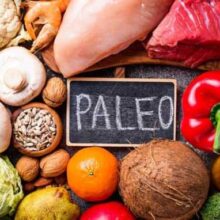9 Signs of Blood Pressure and What You Need to Start Doing Immediately
The post 9 Signs of Blood Pressure and What You Need to Start Doing Immediately appeared first on Healthy Holistic Living.
Are you one of the millions of people unknowingly living with high blood pressure? You’re not alone. About one in every three American adults deals with the condition, according to the Centers for Disease Control and Prevention. (1) The good news is a high blood pressure diagnosis doesn’t mean you’re destined for a life of prescription medications. It’s relatively easy to lower blood pressure naturally, especially by improving your diet in order follow a high blood pressure diet.
If you are wondering whether you have high blood pressure, some warning signs can include:
chest pains
confusion
headaches
ear noise or buzzing
irregular heartbeat
nosebleed
tiredness
vision changes
If you’ve been diagnosed with high blood pressure or you’re just hoping to prevent it from developing in the future, a high blood pressure diet is one of the most important things to address. A healthy diet is the key natural remedy for high blood pressure, especially since it’s completely safe, simple and works fast to improve your overall health beyond just your blood pressure.
The High Blood Pressure Diet: How to Improve Your Diet to Lower High Blood Pressure
Research shows that about 50 percent of people with high blood pressure fail to control their condition, either because they aren’t aware of the problem or they haven’t made lifestyle changes that promote overall heart health.
It might seem daunting to overhaul your whole life to help control your high blood pressure — for example, by taking prescriptions, eating differently, lowering stress and exercising. But you’ll be happy to learn that it’s usually surprisingly easy for many people to help tackle high blood pressure just by making some simple changes.
For example, people following a high blood pressure diet like the DASH diet over time have been able to lower their systolic blood pressure by seven to 12 points, a significant amount that can make a big difference. This can be accomplished in stages through very approachable steps, such as eating more fresh produce and cooking more often.
Some of the best foods that lower blood pressure naturally include:
1. Vegetables
Eating a variety of vegetables is a staple for basically every diet that exists, considering veggies are high-antioxidant foods packed with protective nutrients like fiber, vitamin C, vitamin K and various electrolytes (yet very low in calories). A report published in the Journal of the American Medical Association found that people who ate a mostly plant-based diet reported lower blood pressure readings than meat eaters who were likely to consume less fresh produce. (2)
Aim for at least four to five servings of different veggies every day. Ideally, include a variety so you get a range of nutrients (hence the saying “eat the rainbow”). Leafy greens like spinach, kale, mustard greens and turnip greens are potassium-rich foodsand among the healthiest foods on earth, and all hardly add any calories to your diet.
2. Fresh Fruit
Consuming fresh fruit (as opposed to juices or sweetened, canned fruits) is a great way to increase your intake of fiber, electrolytes like potassium and magnesium, and antioxidants like flavonoids and resveratrol. (3) Two to four servings is a good amount for most people, especially fruits like berries, citrus, kiwi, apples and melon.
3. Lean Proteins
This can include foods such as wild-caught seafood (especially anti-inflammatory omega-3 foods like salmon, sardines and halibut), cage-free eggs and grass-fed/pasture-raised meats. Aim to get about 20 percent to 30 percent of your total calories from “lean and clean” proteins. This type of protein is important to maintain your energy levels. These foods also make you feel full, balance your blood sugar and help maintain muscle strength.
4. Beans and Legumes
Beans and legumes — lentils, chickpeas, black beans and adzuki beans — are great sources to increase your intake of fiber, protein, B vitamins and certain antioxidants. They’re suitable for people who don’t consume meat or animal products, low in calories, plus almost completely free of sodium (when you make them from scratch or rinse the canned kinds well).
A helpful tip for making beans even healthier and digestible is to first soak them overnight before cooking, which helps release antinutrients that block mineral absorption and interfere with digestive processes. Try to consume beans/legumes several times per week as a good meat alternative
5. Healthy Fats
Nuts and seeds are a potent source of healthy fats, and they also add some protein and fiber to your diet, too. Aside from seeds and nuts, other beneficial anti-inflammatory foods that are packed with healthy fats include avocados, coconut oil and extra virgin olive oil. These fats help stabilize blood sugar levels, a perk that helps keep you full and less likely to overeat.
Most people should get about 25 percent to 35 percent of their daily calories from healthy fats. If you’re dealing with high cholesterol and high blood pressure, try lowering your intake of saturated fats from animal foods and butter and oils like palm oil to help prevent cardiovascular complications, although in moderation these can still be healthy for most people. (4)
6. 100 Percent Whole Grains (Ideally Sprouted)
Whole grains are emphasized on the DASH diet and other high blood pressure diet plans mostly because they’re a good source of fiber and certain minerals known to lower blood pressure, especially compared to refined carbohydrates. (5) Examples of whole grains to eat in moderation (some of which are called “ancient grains” and are actually more like seeds than grains) include brown rice, amaranth, buckwheat, quinoa, barley, farro, wheat berries, teff and millet.
The DASH diet recommends up to six to eight servings of whole grains daily, but my opinion is to emphasize things like fresh produce, lean proteins and healthy fats even more, considering their nutrient density. When you do eat grains, try to focus mostly on gluten-free, sprouted whole grains.
7. Organic, Unsweetened Dairy Products
While the DASH diet includes low-fat or fat-free dairy products like milk and yogurt, it’s important to focus on the quality of the dairy you consume. Choosing organic, unsweetened and ideally raw dairy is the best option for most people, especially the kinds that come from goats or A2 cows.
Dairy foods like unsweetened, organic yogurt and kefir are a good source of various nutrients like calcium, protein and important probiotics, which is why they’re among the top choices of many nutritionists. Raw milk in moderation is something I recommend if it’s available to you, since it’s high in nutrients and enzymes that make dairy easier to digest.
High Blood Pressure Diet: The DASH Diet Protocol for Lowering Blood Pressure
The DASH diet (which stands for Dietary Approaches to Stop Hypertension) is most doctors’ go-to eating plan for lowering high blood pressure naturally. The DASH diet was first created by researchers sponsored by the U.S. National Institutes of Health. The agency wanted to help people control their weight and blood pressure through diet. This includes eating a variety of easy-to-find healthy foods while reducing intake of empty calories, high-sodium foods, added sugar, refined grains and unhealthy fats. (6)
In January 2016, U.S. News & World Report named the DASH diet “the best diet” for the sixth year in a row. (7) In addition to lowering high blood pressure, the DASH diet also aids in weight loss, lowering cholesterol, and preventing or controlling diabetes. The goal of the DASH eating plan involves increasing the public’s intake of nutrients like potassium, calcium, magnesium, fiber and protein. All of these are important for maintaining general heart health and fighting various signs of aging. (8)
Food for lowering blood pressure most emphasized on the DASH diet but that should also be implemented in a high blood pressure diet include:
fresh vegetables and fruits (especially those high in potassium, which lessens the effects of sodium) (9)
low-fat dairy products (ideally organic and always unsweetened)
lean protein foods
100 percent whole grains
beans/legumes
healthy fats like olive oil, nuts, avocado and seeds
Tips for Lowering Blood Pressure
Over the years, research reveals that several habits and lifestyle changes can greatly increase your odds of preventing high blood pressure and maintaining a healthy blood pressure range. These include:
1. Cook More at Home
Cooking at home is an important part of lowering your blood pressure, which is why the creators of the DASH diet recommend it. This means keeping your diet as unprocessed as possible — consuming less things that come in packages, avoiding takeout/restaurant food and really limiting fast food. Making your own homemade meals from fresh, nutrient-dense food helps you lower your sodium and sugar intake while boosting your intake of powerful blood pressure-lowering nutrients like potassium, antioxidants and fiber.
2. Increase Fiber Consumption
Consuming plenty of fiber has been shown to help prevent hypertension, plus it can manage your appetite and avoid the blood sugar roller-coaster that results in cravings, fatigue, poor digestion and various health problems. (10) Fiber is found in nearly all unprocessed plant foods, so eating fresh vegetables not only helps in adopting a high-fiber diet, but it also aids in lowering your blood pressure. High-fiber foods also help reduce your risk of diabetes, high triglyceride levels, high cholesterol, digestive problems and weight gain.
3. Lower Your Sodium Intake
A low-sodium diet is the recommended approach to controlling high blood pressure because high amounts of sodium, found in basically all processed and packaged foods, is known to worsen high blood pressure by impacting fluid retention and how arteries dilate. (11)
Sodium is a type of electrolyte that’s balanced by other beneficial electrolytes like potassium and magnesium in order to keep blood pressure within a healthy range. The problem is that most people eating a “Standard American Diet” consume far too much sodium and far too little potassium and magnesium, leading to electrolyte imbalances.
4. Get More Potassium
A low-potassium, high-sodium diet contributes to high blood pressure, hypertension and cardiovascular disease. (12) Potassium — found in foods like green veggies, bananas, sweet potatoes, organic dairy products, beans and avocados — is the third most abundant mineral in the body and is needed to interact with sodium to perform a number of important functions.
Potassium naturally increases sodium excretion and is found within all cells, as it plays a role in regulating heartbeat rhythms, nerve impulses, muscle contractions and digestive health. Low potassium can raise fluid retention and elevate blood pressure by interfering with heart palpitations, narrowing the arteries and resulting in poor circulation.
5. Stay Hydrated
Drinking enough water each day is important for preventing dehydration, balancing fluids, beating cravings and preventing fatigue. Consume more fresh water in place of things like juice, soda, sweetened coffee and tea, making sure to have about eight eight-ounce glasses or more daily.
6. Practice Portion Control
There’s no reason to get overwhelmed and fear that you’ll never be able to eat your favorite foods again. Focus on filling up on the healthy things first, so you’re less likely to crave the unhealthy stuff. Watch your portion sizes, and practice mindful eating to make sure you give your body what it needs to feel good but not too much more that weighs you down.
Remedies for Lowering Blood Pressure
Here are 10 home remedies that may help in managing high blood pressure, each expanded with additional information. Remember to consult a healthcare professional before trying any home remedies.
Beet juice: Beets are rich in nitrates, which your body converts into nitric oxide, a compound that helps relax blood vessels and improve blood flow. Drinking a glass of beet juice daily may help lower blood pressure. You can make beet juice by blending 1-2 beets with water and straining the mixture.
Apple cider vinegar: Apple cider vinegar is believed to help reduce blood pressure due to its acetic acid content, which may have a vasodilatory effect. Mix 1-2 tablespoons of apple cider vinegar with water and consume daily. To enhance the taste, you can add a teaspoon of honey.
Hawthorn: Hawthorn is an herb traditionally used to treat high blood pressure. Its extract can help lower blood pressure by improving blood vessel function and increasing the production of nitric oxide. Drink hawthorn tea by steeping dried hawthorn berries, leaves, or flowers in hot water for 5-10 minutes.
Celery juice: Celery contains compounds called phthalides, which may help relax blood vessels and lower blood pressure. Drinking celery juice or consuming celery seed supplements may be helpful. To make celery juice, blend 2-3 celery stalks with water and strain the mixture.
Pomegranate juice: Pomegranate juice is rich in antioxidants, which can help reduce blood pressure by protecting blood vessels from damage and promoting their elasticity. Drink a cup of pomegranate juice daily, preferably without added sugar or preservatives.
Flaxseed: Flaxseed is rich in omega-3 fatty acids, lignans, and fiber, which may help lower blood pressure. Add ground flaxseed to your meals or consume flaxseed oil. Start with a teaspoon per day and gradually increase the amount to 2-3 tablespoons.
Turmeric: Turmeric contains a compound called curcumin, which may help lower blood pressure by improving endothelial function and reducing inflammation. Add turmeric to your meals, or take a curcumin supplement as advised by your healthcare professional.
Cat’s claw: Cat’s claw is an herb traditionally used for high blood pressure. It is believed to help reduce blood pressure by dilating blood vessels and improving blood flow. Consume cat’s claw as a tea or supplement, but consult a healthcare professional first, especially if you are on medication.
Green tea: Green tea is rich in catechins, which can help relax blood vessels and lower blood pressure. Aim to drink 3-4 cups of green tea daily, preferably without added sugar or milk.
Dark chocolate: Dark chocolate contains flavonoids that may help lower blood pressure by improving endothelial function and promoting vasodilation. Consume a small amount of dark chocolate (70% cocoa or higher) daily, around 1-2 ounces.
Lifestyle changes, such as weight management, exercise, dietary changes, stress management, and limiting alcohol and caffeine intake, are also crucial in managing high blood pressure effectively. It is essential to remember that home remedies should be used in conjunction with these lifestyle changes for optimal results.
Some additional lifestyle changes to consider include:
Quit smoking: Smoking is a significant risk factor for high blood pressure and heart disease. Quitting smoking can help improve overall cardiovascular health.
Sleep: Getting sufficient sleep (7-9 hours per night for adults) is crucial for maintaining healthy blood pressure. Poor sleep quality or sleep disorders like sleep apnea can contribute to high blood pressure.
Maintain a healthy diet: In addition to the DASH diet, incorporating foods rich in magnesium, calcium, and fiber can help manage blood pressure.
Stay hydrated: Drinking enough water and staying hydrated can help maintain proper blood volume and support healthy blood pressure levels.
Monitor your blood pressure regularly: Regular blood pressure monitoring can help detect changes early and prompt necessary adjustments to your lifestyle or medications.
Manage underlying health conditions: High blood pressure can be caused or exacerbated by other health conditions like diabetes, kidney disease, or hormonal imbalances. Proper management of these conditions can help control blood pressure.
Work closely with your healthcare professional: Keep your healthcare provider informed about any home remedies or lifestyle changes you try. They can help guide you on the most effective strategies to manage your blood pressure.
High Blood Pressure Facts, Causes and Symptoms
What exactly is high blood pressure, and how do the foods you eat affect it?
High blood pressure is a condition that results from an increased force of blood moving through your arteries from your heart, which pushes against the walls of the arteries and over time can cause many problems. Every time your heart beats it pumps out blood, and the rate at which it does determines your blood pressure. It’s natural to have higher blood pressure at certain times, like when you’re stressed or exercising, but chronically high blood pressure starts to wear down arteries and increases the risk for things like coronary heart disease,stroke, heart attack, diabetes or kidney damage.
High blood pressure (considered anything over the normal level of 120/80 mmHg) is caused by a number of factors, including low nutrient intake, a poor diet high in sodium, obesity or being overweight, smoking, lack of physical activity/sedentary lifestyle, high amounts of chronic stress, other compounding medical problems and a family history of high blood pressure.
High blood pressure symptoms aren’t always present and can be hard to notice, so regular checkups are the best way to make sure you’re within a healthy range. Getting your blood pressure under control has numerous anti-aging, protective benefits, including less risk for peripheral artery diseases, protection from cardiac arrest, lower risk for a blood vessel bursting and having a stroke, protection of vision, and a lower risk for kidney damage.
Eating a nutrient-dense, low-processed diet can help bring your blood pressure closer to normal or even within a completely healthy range. You’ll start to see a difference usually within just a few short months, but consistency and ongoing effort are key.
Foods, including fresh vegetables and fruit, lean proteins and certain healthy fats, help lower inflammation and prevent nutrient deficiencies, which are two of the biggest causes for high blood pressure. (13) And a healthy high blood pressure diet is even more impactful when you make other lifestyle changes, too, like managing stress better, exercising regularly, quitting smoking and getting solid sleep.
High Blood Pressure Diet Takeaways
About one in every three American adults deals with the condition, according to the Centers for Disease Control and Prevention. Research shows that about 50 percent of people with high blood pressure fail to control their condition, either because they aren’t aware of the problem or they haven’t made lifestyle changes that promote overall heart health.
Foods to eat on a high blood pressure diet include vegetables, fresh fruit, lean proteins, beans and legumes, healthy fats, 100 percent whole grains that are ideally sprouted, and organic, unsweetened dairy products.
The DASH diet was named the best diet for a sixth year in a row by U.S. News & World Report, and it’s an excellent high blood pressure diet. In addition to lowering high blood pressure, the DASH diet also aids in weight loss, lowering cholesterol, and preventing or controlling diabetes.
You can help lower blood pressure by cooking more at home, increasing fiber consumption, lowering your sodium intake, getting more potassium, staying hydrated and practicing portion control.
The post 9 Signs of Blood Pressure and What You Need to Start Doing Immediately appeared first on Healthy Holistic Living.










